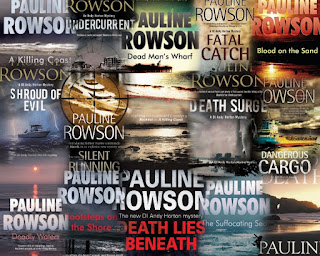Fascinating Forensic Facts – Bodies and soil – crime scenes with DI Andy Horton
 In A DEADLY WAKE, (15) Andy Horton discovers a buried body exposed during a landslip on the Isle of Wight.
In A DEADLY WAKE, (15) Andy Horton discovers a buried body exposed during a landslip on the Isle of Wight.
Here are some snippets of forensic facts uncovered during my research for this and for the others in the DI Andy Horton mystery series.
Investigators will check whether the soil has been disturbed. They
will look for any unusual depressions or indentations in the ground. As a
body beneath the surface decomposes, the soil above it will slump
further into the grave. The soil will also be looser and softer than
the surrounding compacted soil, which can be another indicator of
disturbed earth.
Studying the soil colour, texture and consistency can also be used to determine if the soil has been previously disturbed.
Soil collected will be analysed by forensic soil scientists. The type of soil a body is buried in can alter its rate of decomposition—acidic soil can cause a body to break down up faster than alkaline soil so this can be useful if the body has been missing for several years.
Forensic archaeologists also look at plant growth or death, and at changes in appearance to an area. These clues can help investigators obtain information regarding the presence of a possible grave.
So there you have it!

Comments